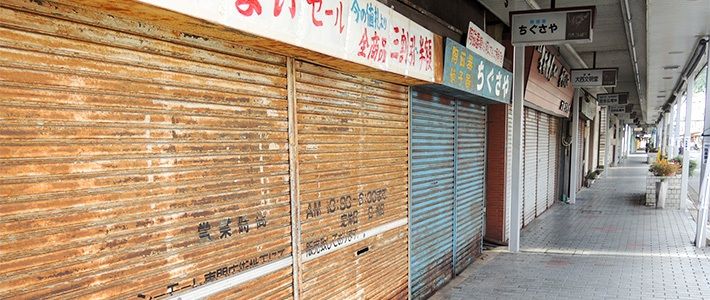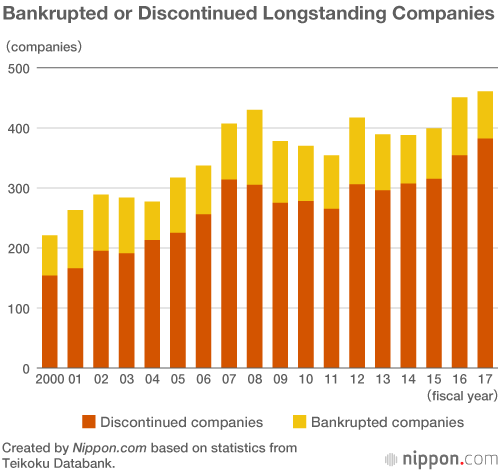
Record Number of Longstanding Japanese Companies Close Down in 2017
Economy- English
- 日本語
- 简体字
- 繁體字
- Français
- Español
- العربية
- Русский
A study on Japanese companies with a history of 100 or more years found that 461 establishments either went bankrupt or discontinued their business in fiscal 2017, a 2.2% increase over the previous year. This number is the largest on record since data was first compiled in fiscal 2000, exceeding the 430 longstanding companies that closed their doors in fiscal 2008, the year of the global financial crisis, and the 451 longstanding companies that went out of business in fiscal 2012, following the Great East Japan Earthquake.
Among the 461 companies that shut down in fiscal 2017, 79 were bankrupt companies that underwent legal liquidation, while 382 were companies that discontinued their business for some other reason. One reason why many longstanding companies not immediately threatened with bankruptcy decided to close their doors is that their elderly owners could not find a successor to carry on the business. During the 18-year period between fiscal 2000 and 2017, a total of 6,432 longstanding companies either went bankrupt or ceased operations, accounting for around 1% of all the bankrupted or discontinued businesses during that period.

In fiscal 2017, the retail sector accounted for the bulk of bankrupted or discontinued longstanding companies at 191, which was 41.1% of the total number. There were quite a few cases of family-run stores that had long been community fixtures, such as local liquor or clothing stores, going out of business even though they were profitable, because the younger generation did not want to take over. The retail sector was followed by the manufacturing sector, which lost 97 longstanding companies, or 21.0% of the total; and the wholesale sector, which had 80 bankrupted or discontinued longstanding companies, 17.4% of the total. Around 80% of the longstanding companies that disappeared in fiscal 2017 came from those three sectors.
Longstanding hotels or traditional inns topped the list of specific businesses that closed during the year with 18. It is the seventh time for hotels and inns to head this list since fiscal 2000. In many cases, the reason it was not possible to continue or reorganize a business was the heavy debt burden incurred in the late 1980s during the bubble economy for the sake of facility expansion.
Factors identified by Teikoku Databank for the closing of longstanding businesses included not only the difficulty of finding successors but also the increasingly short-term cycle for consumer preferences and trends, the amendment and loosening of regulations, and changes in the industrial structure. In many cases, business owners found it difficult to continue operations in that new environment. For retailers in particular, the influx of large-scale competitors, such as huge chain stores, and shopping malls, negatively impacted stores and other establishments developed on the basis of the traditional business model.
(Translated from Japanese. Banner photo © Pixta.)